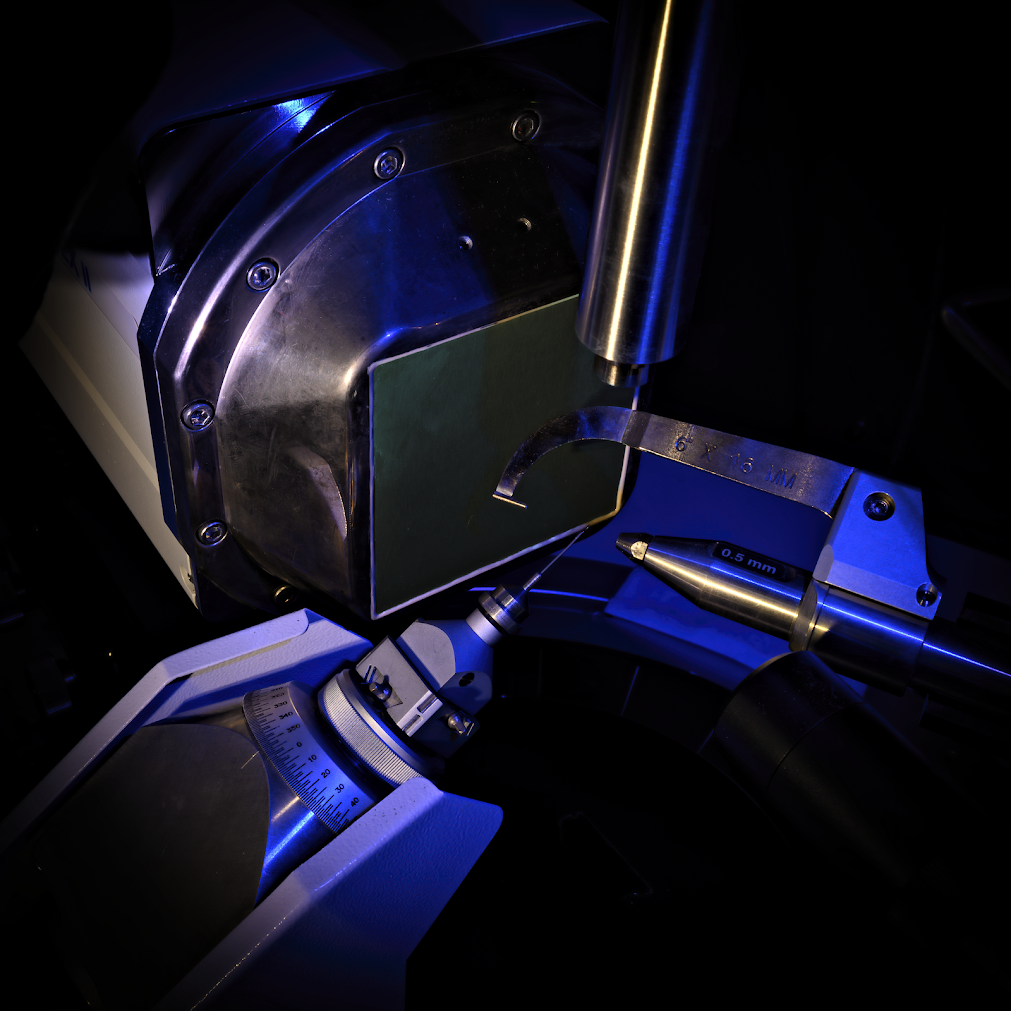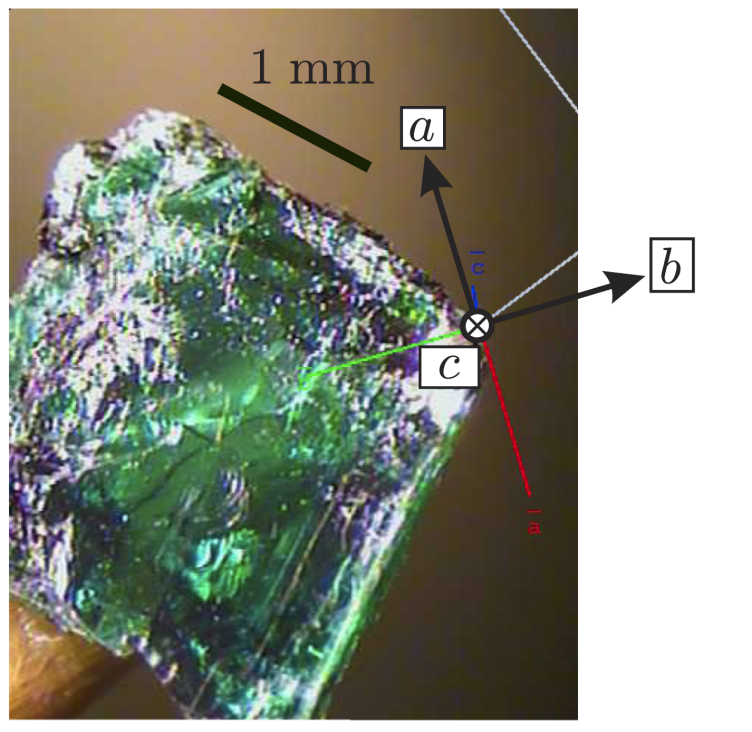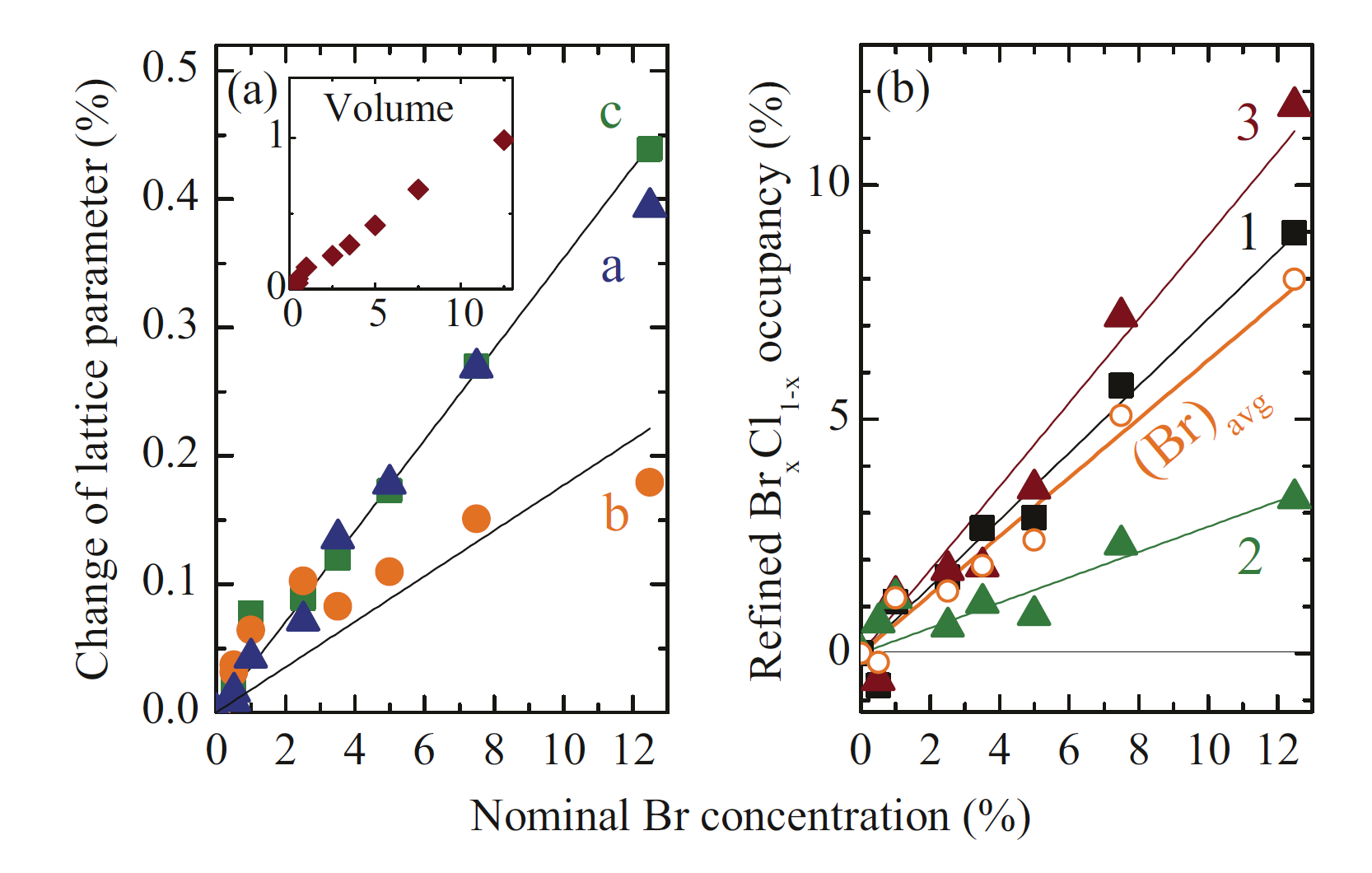X-ray diffraction

Understanding quantum magnetic materials is impossible without understanding their crystallographic structure. How are the magnetic ions arranged in space? How do they interact? Even on a more primitive level: you have succeeded in growing a nice single crystal sample of a new compound, but how can you be sure it's the right material?
Single crystal X-ray diffraction is the answer. In our lab we use a Bruker SMART APEX II diffractometer (see above). It is a powerful tool for "real" crystallography and far exceeds our simple "physics" needs. A special Cryostream 700 nitrogen gas flow attachment allows measurements from 400 K down to approximately 80 K.

The simplest but most frequent application of this instrument is to align single crystals. This is absolutely crucial for experiments in which a magnetic or electrical field needs to be applied along a particular crystallographic direction. Here is a BaCdVO(PO4)2 crystal being aligned on the Bruker goniometer. The latter is bottom-left on the image above and the tiny sample is at the tip of the needle.
Solving an unknown crystal structure is of course more involved and time consuming. BaCdVO(PO4)2 again provides an interesting example. It was known that the magnetic structure that emerges in this frustrated magnet at low temperatures is a very peculiar "up-up-down-down" spin arrangement. To explain this behavior, theorists had introduced very complex model Hamiltonian with rather implausible long range interactions. In our experiments we discovered the real reason. It turns out that the low-temperature crystal structure of this material is different from that known from room temperature. There is a structural phase transition at ~250 K that nobody knew about. The result is an alternation of weak-strong exchange interactions between spins, which naturally stabilizes the peculiar magnetic state. The spin excitation spectrum of this compound is also impossible to understand without taking the modified crystal structure into account. Below are some X-ray diffraction patterns revealing the structural change. For more details, see external page V. K. Bhartiya, K. Yu. Povarov, D. Blosser, S. Bettler, Z. Yan, S. Gvasaliya, S. Raymond, E. Ressouche, K. Beauvois, J. Xu, F. Yokaichiya, and A. Zheludev, Phys. Rev. Research 1, 033078 (2019).

In several projects we study the evolution of magnetic properties as a function of chemical substitution. For example, in external page D. Hüvonen, G. Ballon, and A. Zheludev, Phys. Rev. B 88, 094402 (2013) we studies the magnetization process of the quantum dimer system (C4H12N2)Cu2(Cl1−xBrx )6 as a function of Br content x. The problem is that the halogen concentration in the grown sample is different from that in the growth solution. The actual Br content was determined by X-ray diffraction.
